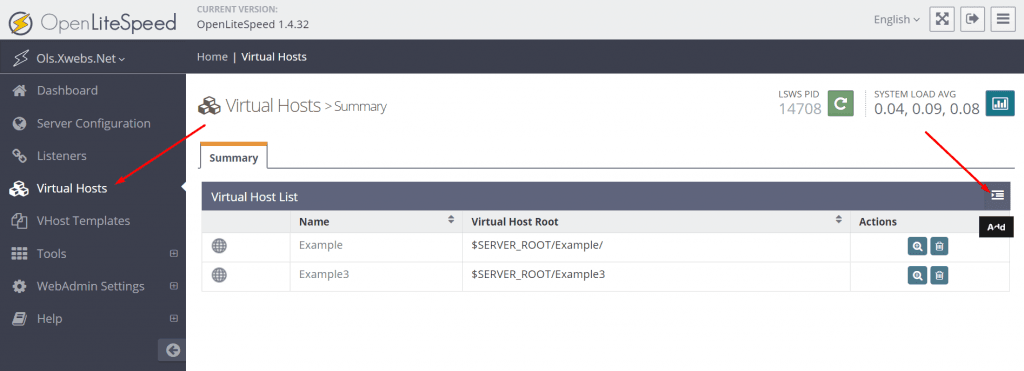
Ubuntu can be set up to run Apache by using the command "apt_get install apache ubuntu". Before installing Apache, make sure your firewall software supports it. Ubuntu's firewall software, ufw, is available. Open ufw, and choose the option "allow connections". The output should show whether Apache is allowed or not. If it is allowed, then you should see "active" for the Apache server.
Prerequisites
Before installing Apache on Ubuntu-based computers, make sure the system has all necessary prerequisites. For example, you must have access to the sudo command, which allows you to edit files. A user account must be created with administrative privileges. After you've completed these prerequisites, you are ready to start installing the webserver.
Enable port 443. By running sudo ufw permit in Apache Full, you can allow HTTP and HTTPS ports. You should also ensure you have at most 50MB of space. The Apache server will require approximately 10MB disk space once the installation has been completed. However, the actual space required depends on the configuration options, third-party modules, and the size of your web site. Apache requires an ANSI C compiler. If you are using a different vendor's compiler, ensure that it supports ANSI-C. Make sure your path contains the basic building tools.

Configuring a UFW firewall
After you have installed UFW, you need to set up rules that protect your computer against unauthorized connections. UFW firewall offers several options for setting up its firewall rules. First, you must define a netmask in order to stop UFW from allowing connections via IP addresses that don't belong to your subnet. Secondly, you need to configure a policy to control the number of allowed connections. UFW uses a default policy called "deny". This policy allows only certain connections, and blocks all other connections. You can also delete rules by number or name.
UFW is also an option to configure your firewall to only allow outgoing connections. This is the default setting that provides the highest security. You can also block IP addresses ranges, ports, programs, or combinations thereof. To modify the policy, make changes to /etc/default/ufw.
Reloading Apache's web server
Reloading an Apache web server on Ubuntu is not a very complicated process. It is done with the systemctl Command. It may take some time to finish. If the configuration is complex or large, you may experience unexpected interruptions to your server.
It is crucial to verify all configurations before restarting the web server. You must ensure that there are no zombie processes running in your system. This is essential because sometimes, the web server might be stopped due to an insecure Internet connection.

Configuring virtual hosts
Configuring multiple Apache virtual host is one way to allow multiple domains to run on the same Ubuntu server. This powerful tool allows you to host multiple domains from one server with one IP address. Virtual hosts allow you to configure any host name and are flexible.
It can be difficult to understand this process for beginners as there are many options. You can do it by following these simple steps. First, create the directory where your files will be stored. This directory will contain the site's files. It will be called your document root. The default directory will always be /var/www. However, virtual hosts will have theirs.
FAQ
How Do I Choose A Domain Name?
It is crucial to choose a great domain name. A great domain name will help people find your site when they search for your product.
Your domain name should be concise, memorable, unique, relevant, and easy to remember. In order to make your domain name memorable, people should be able to type it into their browsers.
Here are some tips to help you choose the right domain name.
* Use keywords related your niche.
* Avoid using hyphens (-), numbers and symbols.
* Don't use.net or.org domains.
* Never use words that have already been used.
* Try to avoid generic terms like "domain" or "website."
* Check that it is available.
What is Website Design Software?
The website design software can be used by graphic artists and photographers, illustrators, writers and others who are involved in visual media.
There are two types main website design software options: desktop apps and cloud-based. Desktop apps can only be installed locally on your PC and will require additional software to run on your system. Cloud-based applications are hosted on the internet. This makes them great for mobile users.
Desktop Applications
Although desktop applications are more powerful than those offered by cloud-based services, they may not be necessary. Some people prefer to work only from a desktop application because it is more convenient. Some people like the same tool no matter whether they're working on a computer or a smartphone.
Cloud-Based Solutions
A cloud-based solution is a good choice for web designers who are looking to save money and time. These services let you edit any type or document anywhere you have an internet connection. This allows you to use your tablet while waiting for your coffee maker to brew.
If you decide to use a cloud service, you will still need a license. You don't have to buy additional licenses for upgrading to the latest version.
These programs are available for web page creation if you have Photoshop or InDesign, Illustrator, and other Adobe products.
What is a static website?
A static website can be hosted anywhere, including GitHub Pages, Amazon S3, Google Cloud Storage, Windows Azure Blob storage, Rackspace Cloud Files, Dreamhost, Media Temple, and others. You can also deploy a static website to any platform that supports PHP such as WordPress, Drupal Joomla! Magento PrestaShop and others.
Static web pages are generally easier to maintain since they don't constantly send requests back-and-forth between servers. Because they don't send any requests back-and-forth between servers, static web pages load much faster. Because of this, static web pages are often more suitable for smaller businesses that don’t have the resources or time necessary to manage a website.
Statistics
- The average website user will read about 20% of the text on any given page, so it's crucial to entice them with an appropriate vibe. (websitebuilderexpert.com)
- When choosing your website color scheme, a general rule is to limit yourself to three shades: one primary color (60% of the mix), one secondary color (30%), and one accent color (10%). (wix.com)
- It enables you to sell your music directly on your website and keep 100% of the profits. (wix.com)
- It's estimated that chatbots could reduce this by 30%. Gone are the days when chatbots were mere gimmicks – now, they're becoming ever more essential to customer-facing services. (websitebuilderexpert.com)
- Studies show that 77% of satisfied customers will recommend your business or service to a friend after having a positive experience. (wix.com)
External Links
How To
What is Website Hosting?
Website hosting describes where visitors go when they visit a site. There are two types.
-
Shared hosting – This is the most affordable option. Your website files reside in a server managed by another company. Customers who visit your website send their requests via the Internet over to that server. You then receive the request from the owner of the server.
-
Dedicated hosting: This is the most costly option. Your website is hosted entirely on one server. There are no other websites sharing space on the server. Your traffic remains private.
Shared hosting is preferred by most businesses because it's cheaper than dedicated hosting. You can use shared hosting if the company owns the server to provide the resources required for your website.
But there are pros and cons to both options. These are some of the major differences between them.
Sharing Hosting Pros
-
Lower Cost
-
Easy to Set Up
-
Frequent Updates
-
It can be found on many web hosting companies
You can get shared hosting for as low as $10 per monthly. Remember that shared hosting usually comes with bandwidth. Bandwidth refers the data that you can transfer over the Internet. You may have to pay extra for large amounts of data, even if your blog only contains photos.
You will quickly see why you paid so much for your former host once you have started. The majority of shared hosts offer limited customer support. While they may occasionally assist you in setting up your site and other tasks, after that you are all on your own.
You'll want to look into a provider that offers 24-hour phone support. They'll take care of any issues that come up while you sleep.
Dedicated Hosting Cons:
-
More Expensive
-
Less common
-
Requires special skills
With dedicated hosting, everything you need for your website is at your fingertips. You won't worry about how much bandwidth you are using or how much RAM (random Access Memory) you have.
This means you'll have to spend more upfront. But once your online business starts, you'll realize you don't need any technical assistance. You will become an expert in managing your servers.
Which Is Better For My Business, So Which Is Better?
This depends on the kind of website that you want. Shared hosting is best for those who only need to sell products. It is simple to set up and easy to maintain. A server shared with several other sites means that you will receive frequent updates.
If you want to create a community around a brand, dedicated hosting may be the best choice. It allows you to focus on building your brand and not worrying about managing your traffic.
Bluehost.com has both. Bluehost.com provides unlimited monthly data transfer, 24/7 support, free domain registration and a 30-day money back guarantee.